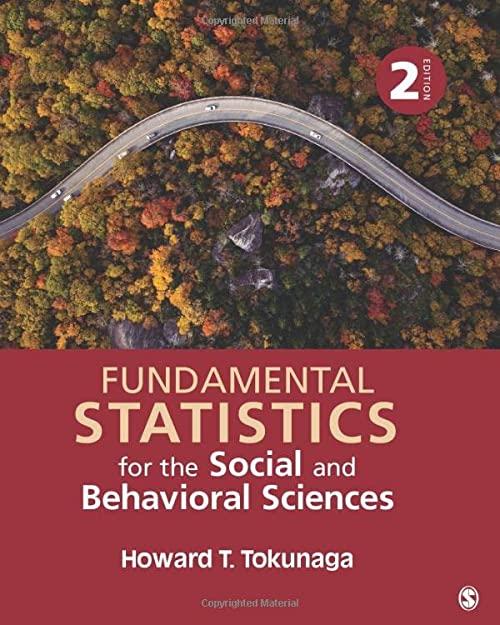What is the relationship between the (t)-test and an ANOVA? In Chapter 9, we looked at two
Question:
What is the relationship between the \(t\)-test and an ANOVA? In Chapter 9, we looked at two different types of instruction in reading comprehension (imagery and repetition). A \(t\)-test for independent means found a significant difference between the effectiveness of the two types, \(t(18)=2.85, p<.05\). To see the relationship between the \(t\)-test and the ANOVA, calculate the \(F\)-ratio for the one-way ANOVA for the same data and compare the results.
Imagery: \(N=10, \bar{X}_{1}=12.10, s_{1}=1.60\)
Repetition: \(N=10, \bar{X}_{2}=9.90, s_{2}=1.85\)
a. State the null and alternative hypotheses \(\left(\mathrm{H}_{0}\right.\) and \(\left.\mathrm{H}_{1}\right)\).
b. Make a decision about the null hypothesis.
(1) Calculate the degrees of freedom \((d f)\).
(2) Set alpha ( \(\alpha\) ), identify the critical value, and state a decision rule.
(3) Calculate the \(F\)-ratio \((F)\) and create an ANOVA summary table.
(4) Make a decision whether to reject the null hypothesis.
(5) Determine the level of significance.
(6) Calculate a measure of effect size \(\left(R^{2}\right)\).
c. Draw a conclusion from the analysis.
d. Compare your value of the \(F\)-ratio with the \(t\)-test value of 2.85 to confirm their mathematical equivalence.
Step by Step Answer:

Fundamental Statistics For The Social And Behavioral Sciences
ISBN: 9781506377476
2nd Edition
Authors: Howard T Tokunaga




